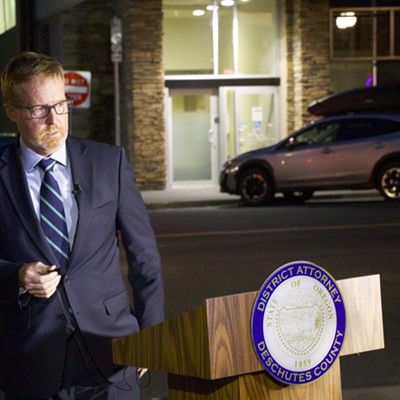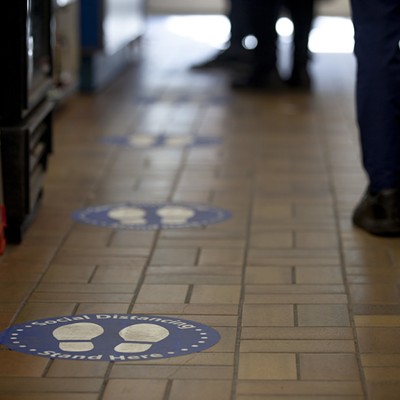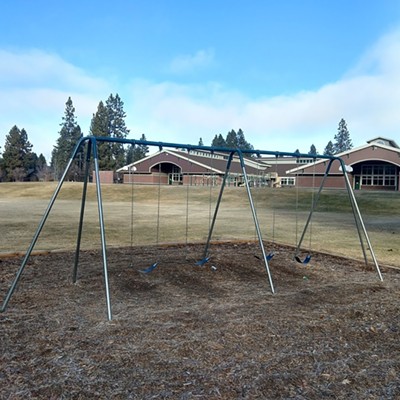We discussed progress on testing, the effectiveness of social distancing and the big question everyone wants to know: the timeline for returning to "normal."
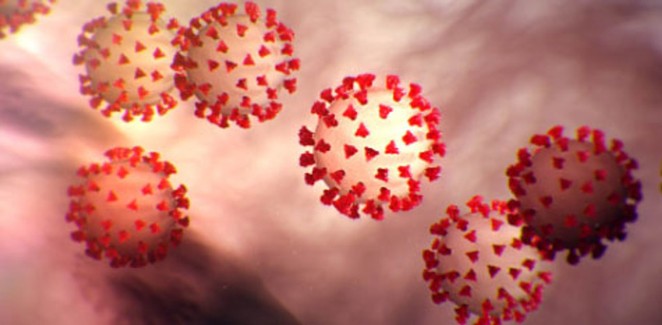
The conversation has been lightly edited for clarity.
Source Weekly: What is the overall status of COVID-19 in Oregon and Deschutes County right now?
Dr. George Conway: The evidence overall seems to appear that what we now call physical distancing appears to be flattening the curve of cases. There’s evidence for that in other locals and in Oregon.
There’s also increasing evidence for the transmissibility for COVID-19 between people talking in close proximity, which is why were encouraging people to wear masks to protect others. Use a high denier [industrial phrase for density] cloth, a tight weave that you cannot see light through if you put it up to the window. Falling that, people could wear a scarf. There’s a post with the U.S. Surgeon General showing people how to make one with rubber bands.
Physical distancing orders continue to include maintaining 6 feet between other people and to stay at home unless getting physical exercise or going out for absolutely necessary errands like getting food.
SW: Is there any timeline on how long social distancing will last? Will these restrictions be lifted in the next couple of months, or are we going to be stuck inside until a vaccine is approved in a year and a half?
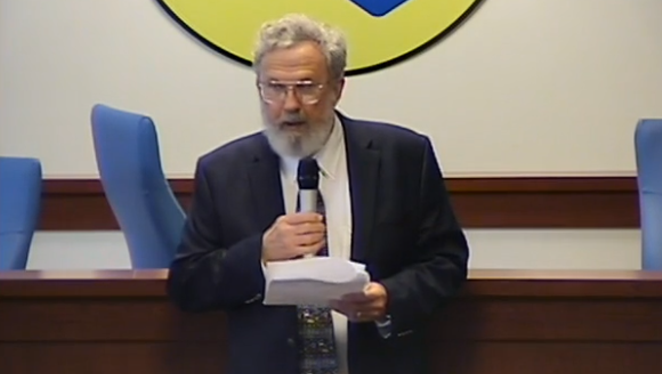
Unless and until there are vaccines—and this is likely 18 months out—until then, we may be in a cycle where we titrate human interaction based on what is happening with case numbers.
There is some discussion about the seasonality of the illness. As there is a reduction in cases from social distancing, the warmer months may not have as many [cases], and then when it gets cooler, during the flu season, it could come back.
SW: Has contact tracing been an effective method for slowing the spread of COVID-19 in Deschutes County?
GC: Right now in Deschutes County, there’s over 40 known cases. We are still able to handle of the volume of cases if the patient is well enough to be interviewed, and we also ask household members. We find out how COVID-19 may have been acquired, and more importantly, we are finding out who has been around the person long enough to find out if they could have acquired COVID-19.
Then we ask those people to stay at home, and let their primary care physician know if they become ill. If so, we encourage them to get tested. Right now, that is how to contain it; it’s the classical public health method. [People who have been in close contact with someone with COVID-19 meet the criteria to get tested if they are showing symptoms of the illness.]
The initial signal for relaxing some of the physical distancing is when we see a sharp decrease in case numbers. Then we could adjust social distancing very carefully, by paying close attention, and then if cases go back up, we would do it all over again. - Dr, George Conway, Deschutes County Health Services Director
tweet this
SW: While there are 40 or more reported cases in Deschutes County, because there’s such an acute testing shortage, some people believe this number is not representative of how many people in the region are carrying the virus. What would you estimate is the true volume of cases here?
There are many ways of speculating [the number of cases] because both people that are asymptomatic—and carrying and shedding the virus—as well as people who may be ill but don’t have a classic presentation, both of these groups may not end up being tested. Test are used very sparingly because of the shortage of swabs, personal protective equipment and other supplies.
SW: What is the testing situation looking like for Deschutes County?
GC: Commercial testing is taking much longer to come online than anticipated. Through put [results turn around] has been slower. These companies want to produce more because that’s how they make money, but there is not enough material to do it.
SW: Can you explain the different kinds of testing available right now to our readers and what they can expect in the future?
But fundamentally we didn’t have enough inventory [of PPE], and didn’t build it up quickly enough. There wasn’t much depth to the stockpile, especially the PPE.
tweet this
GC:
The primary test is a polymerase chain reaction [PCR] test which can detect small amounts of DNA in a sample. It takes specialized equipment, training, takes hours to perform, is expensive and labor intensive. There’s a backlog of these tests at commercial labs… some take up to a week at commercial labs. The University of Washington [used by St. Charles Medical Center for its COVID-19 tests] turns them around a lot quicker, but they have backlogs as well. This test only catches 70% of people who are positive for the virus. It tests for tiny amounts of genetic material and then uses an enzyme to replicate that material. It is a very difficult process.
Rapid antigen testing is coming soon, hopefully during the next week or two. This tests a current, active virus by testing for the proteins on the virus itself. It is even less sensitive [accurate] than the PCR test. [Antigens are the attackers, while antibodies are the defenders, according to microbiologyinfo.com.]
We will possibly have some antibody test available soon, perhaps by next week to some locals. [The Source reported on antibody tests Monday.] These aren’t for clinical use; these are for cross-sectional purposes on the population. We’ll likely be using existing blood drawn for other purposes, like an electrolyte test for example, and we could look for those antibodies in that sample. But antibodies appear late in the course of the illness. These tests will tell us how many people may have been missed with a diagnosis.
SW: How has the State of Oregon been helping Deschutes County during this time?
GC: As the state gets personal protective equipment from the federal stockpile, including masks, it distributes this proportionate to the population of counties. The volume of that hasn’t been what we hoped for. The County is trying to buy quantities, and so is the state, and [the state] will probably share some of that. We are acting in collaboration. But fundamentally we didn’t have enough inventory, and didn’t build it up quickly enough. There wasn’t much depth to the stockpile, especially the PPE. We need a lot more volume to keep field staff safe. That’s why we’re encouraging homemade masks, cloth masks that people can use to protect others, so we can keep PPE for healthcare workers, and law enforcement and other frontline workers, so we can keep it conserved.
SW: Is there anything you wished that we had talked about today?
I want to emphasize that many people are pulling together to limit and manage this epidemic. I’m very fortunate and proud to be working with many people who are doing things like case follow up, interviewing… this is difficult and arduous work and they are doing an amazing job.
See all our Coronavirus coverage at our Coronavirus HQ.



